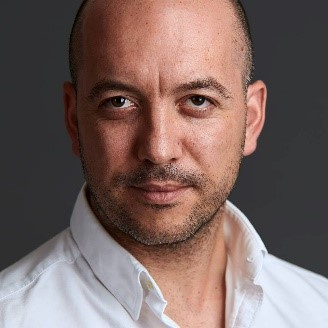Futsal - From Training to Competition
A special issue of Sports (ISSN 2075-4663).
Deadline for manuscript submissions: closed (31 December 2020) | Viewed by 15818
Special Issue Editors
2. CIDESD–Research Center in Sports Sciences, Health Sciences and Human Development, 5001-801 Vila Real, Portugal
Interests: performance analysis in team sports; decision-making process; training periodization; talent development; futsal
Special Issues, Collections and Topics in MDPI journals
Interests: physiology; exercise; athletes; physical training; conditioning; training adaptation; monitoring; sport science; performance
Special Issues, Collections and Topics in MDPI journals
Interests: futsal; football; intermittent exercise; youth development; physiology; physical and tactical match analysis
Interests: notational analysis in sport; sports performance in team and dual sports; contextual factors; sport analytics
Special Issues, Collections and Topics in MDPI journals
Special Issue Information
Dear Colleagues,
Futsal is an emergent sport worldwide. However, little research has been developed with the goal of characterizing physical, technical, and tactical game demands or of monitoring training adaptations and their transfer to the context of performance. Additionally, very few studies have dedicated their efforts to understanding the learning process and the possible routes for futsal players’ development. Furthermore, the emerging technological advances and the possibility to capture positional data indoors opens new venues to the development of original and applied research with implications for performance analysis and training periodization in futsal.
Therefore, this Special Issue opens the possibility to publish original research, meta-analyses, reviews, and case studies related to the training process and performance analysis in futsal. This Special Issue seeks contributions on a variety of topics related to futsal: (i) talent development; (ii) futsal skills tests; (iii) training monitoring and testing; (iv) training periodization; (v) performance analysis; (vi) manipulation of practice tasks; (vii) game characterization; (viii) coaching process.
Dr. Bruno Travassos
Dr. Fabio Nakamura
Dr. Fabio Serpiello
Dr. Miguel Ángel Gómez-Ruano
Guest Editors
Manuscript Submission Information
Manuscripts should be submitted online at www.mdpi.com by registering and logging in to this website. Once you are registered, click here to go to the submission form. Manuscripts can be submitted until the deadline. All submissions that pass pre-check are peer-reviewed. Accepted papers will be published continuously in the journal (as soon as accepted) and will be listed together on the special issue website. Research articles, review articles as well as short communications are invited. For planned papers, a title and short abstract (about 100 words) can be sent to the Editorial Office for announcement on this website.
Submitted manuscripts should not have been published previously, nor be under consideration for publication elsewhere (except conference proceedings papers). All manuscripts are thoroughly refereed through a single-blind peer-review process. A guide for authors and other relevant information for submission of manuscripts is available on the Instructions for Authors page. Sports is an international peer-reviewed open access monthly journal published by MDPI.
Please visit the Instructions for Authors page before submitting a manuscript. The Article Processing Charge (APC) for publication in this open access journal is 1800 CHF (Swiss Francs). Submitted papers should be well formatted and use good English. Authors may use MDPI's English editing service prior to publication or during author revisions.
Keywords
- futsal
- performance analysis
- match analysis
- tactical behaviour
- monitoring and testing
- physical training
- training adaptations
- small-sided games
- pedagogy and teaching
- player development









